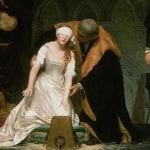 Mysteries
Mysteries  Mysteries
Mysteries  History
History 10 Surprising Stories About the Texas Rangers
 Humans
Humans 10 Philosophers Who Were Driven Mad by Their Own Theories
 Miscellaneous
Miscellaneous 10 Video-Game-Worthy Weapons and Armors from History
 Weird Stuff
Weird Stuff 10 Psychics Who Accurately Predicted Wartime Events
 The Arts
The Arts 10 Pieces of Art Inspired by a Broken Heart
 Health
Health 10 Science Fiction-Sounding New Medical Treatments
 History
History 10 Surprising Facts About the Father of Submarine Warfare
 Space
Space Ten Astonishing New Insights into Alien Worlds
 Weird Stuff
Weird Stuff 10 Bizarre Summer Solstice Rituals Still Practiced Today
 Mysteries
Mysteries Top 10 Haunting Facts About the Ghost Ship MV Alta
 History
History 10 Surprising Stories About the Texas Rangers
 Humans
Humans 10 Philosophers Who Were Driven Mad by Their Own Theories
Who's Behind Listverse?

Jamie Frater
Head Editor
Jamie founded Listverse due to an insatiable desire to share fascinating, obscure, and bizarre facts. He has been a guest speaker on numerous national radio and television stations and is a five time published author.
More About Us Miscellaneous
Miscellaneous 10 Video-Game-Worthy Weapons and Armors from History
 Weird Stuff
Weird Stuff 10 Psychics Who Accurately Predicted Wartime Events
 The Arts
The Arts 10 Pieces of Art Inspired by a Broken Heart
 Health
Health 10 Science Fiction-Sounding New Medical Treatments
 History
History 10 Surprising Facts About the Father of Submarine Warfare
 Space
Space Ten Astonishing New Insights into Alien Worlds
 Weird Stuff
Weird Stuff 10 Bizarre Summer Solstice Rituals Still Practiced Today
10 Normal Things That Were Feared And Despised By Tyrannical Rulers
Generally, dictators and vicious tyrants tend to be a paranoid and hateful bunch who torture and kill out of misanthropy or as a defense against imagined threats. It’s when you get down to the specifics of their individual phobias and pet peeves that it gets weird.
10 Lin Biao
Water And Wind
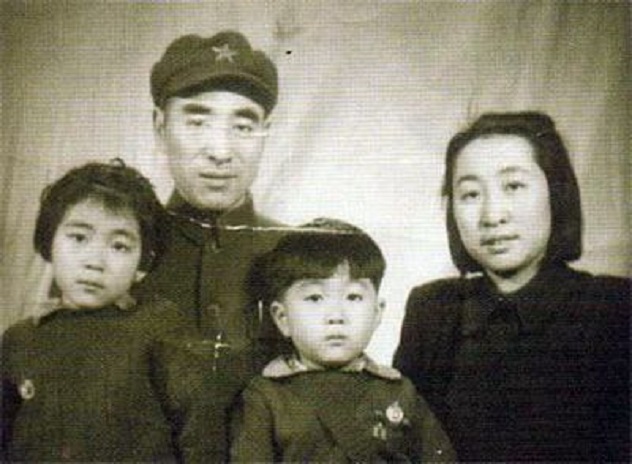
A key supporter of Mao Tse-tung who eventually rose to become his right hand man and chosen successor before dying in a mysterious and suspicious plane crash, Lin Biao was a notorious hypochondriac who suffered an irrational fear of water, as well as wind and cold. His many phobias made him appear like a drug addict most of the time, and in his later years he was often in a very fragile physical and mental state.
He would become seriously ill whenever he perspired and was said to have so feared liquid water that most of his water intake had to come in the form of cooked food. He suffered diarrhea at the sound of running water, and even the sight of rivers and lakes in traditional Chinese paintings made him nervous. He did maintain a house near the coast, but it was hidden in the hills as he could not stand the sight of the sea, which meant he had minimal contact with the navy.
This also affected his personal life, as he didn’t have a bath for years and would only be wiped down with a dry towel. His house had a number of wind-sensitive devices in it, and his wife allegedly had to be careful how she moved while near him, lest she cause a sudden, unwanted breeze. As he was also known for his hatred and contempt for nearly everyone, it isn’t entirely surprising he eventually met a sticky end.
9 Nicolae Ceausescu
Disease And Drafts
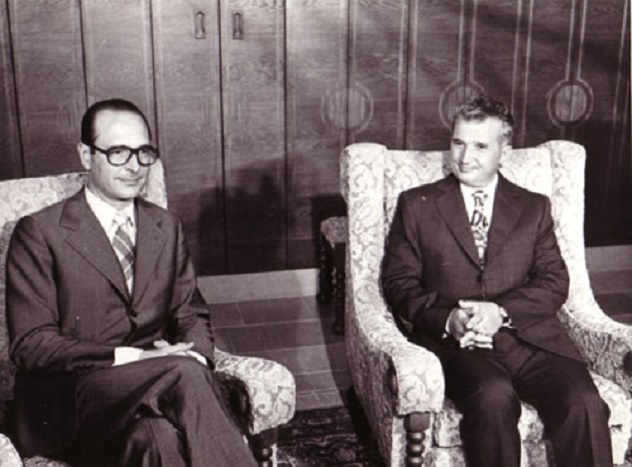
Romanian dictator Nicolae Ceausescu (at right in the photo above) was a notorious hypochondriac, an ailment apparently stemming from problems with his throat early in life. He had an apparent fear of air conditioning, with many buildings built on his orders constructed without it, and his foreign minister complaining of the lack of AC meant accompanying the president on trips to hot African countries was a nightmare.
Later, his hypochondria developed in a fear of drafts and an obsession with disinfecting everything he touched. Food Safety Agency personnel made sure the doorknobs wherever he went were disinfected with alcohol, and staff in his entourage stood on hand with a medical kit with disinfectant wipes in case Ceausescu needed to shake hands with any foreigners. In one reported incident, after being given an affectionate kiss by President Carter during a visit to the United States, the Romanian leader splashed himself in the face with a bottle of alcohol while in the car driving away from the White House, muttering about Carter being a “peanut-head.”
He also refused to eat food at official dinners on foreign trips due to fear of being poisoned, and he employed a chemist whose job it was to destroy the presidential excrement to prevent foreign intelligence from knowing the state of his health. Later, during a visit to Cuba, Castro told Ceausescu about how he had dodged a CIA poisoned-shoe plot designed to make his beard fall out. The Romanian president returned home declaring he would only wear clothes once. They were to be destroyed immediately after.
All his fears of poisoning and infection were rendered moot when he was deposed and executed by firing squad while forced to stand next to a toilet block.
8 Francisco Macias Nguema
Education

The slow-minded dictator of Equatorial Guinea, Francisco Macias Nguema failed the Spanish civil service three times only to succeed on his fourth try due to favoritism by the Spanish, who thought the simple and badly educated man would be an easily manipulated figure. This proved to be a mistake, as his previous humiliations left Nguema with a resounding hatred for intellectuals and education in general. After using his newfound emancipado status to organize militia of his own majority Fang tribe, he turned on the white colonists and sent 7,000 Spanish civil servants fleeing the country.
After fully consolidating absolute power in 1973, he would embark on a campaign to eradicate education from his fiefdom. He went so far as to ban the word “intellectual,” close all libraries (as well as newspapers and printing presses), and declare private education illegal, hoping to teach only political slogans to young impressionable minds. Declaring himself “Grand Master of Science, Education, and Culture,” he purged intellectuals and killed or exiled everyone with an education. It is said after Nguema was through less than a dozen graduates of technical colleges remained in the country.
After a reign of terror that saw organized religion gutted and the economy collapse, Nguema became increasingly unstable as he smoked the intoxicant bhang and took the hallucinogen iboga, becoming so delusional he would engage his dead opponents in debates. After being deposed in a military coup, he was executed by hired Moroccan troops while he ranted at everyone that he would come back from the dead to haunt them.
7 Kaiser Wilhelm II
Asians
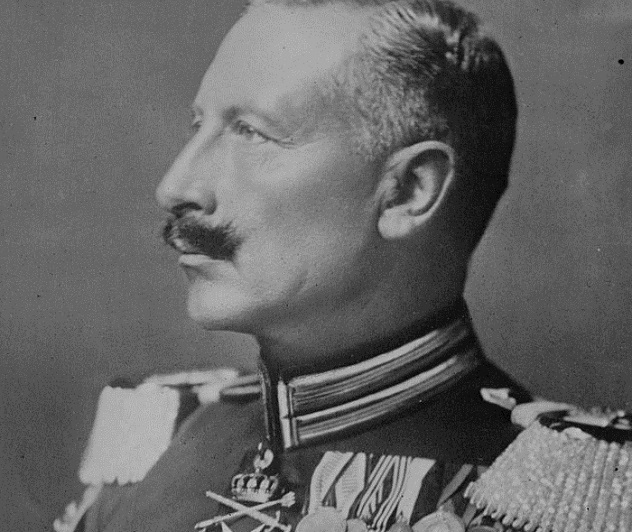
Kaiser Wilhelm II was obsessed with the perceived threat to Western civilization coming from Asia, coining the term “Yellow Peril” that would later become popular in the English-speaking world, to the Kaiser’s glee. After the Japanese defeated China in 1895, Wilhelm sent a letter to his cousin Tsar Nicolas II a picture of the Archangel Michael warning the Western nations (represented by mythological women) of a storm approaching from the East, a storm with a glowering Buddha in the center. In 1900, he had ordered German soldiers en route to China to “act like Huns,” showing no mercy and taking no prisoners.
Having a distaste of Russians who weren’t blood relatives, after Russia was defeated by Japan in 1905, the Kaiser blamed the victory of a non-Christian nation over a Christian one on Russian Christianity being in poor shape, while Japanese soldiers exhibited “good Christian values.”
In 1907, he warned darkly of a coming war between Japan and America, which he believed was a matter of “Race, no Politics, only Yellow versus White.” He would later claim to the tsar that a German agent had informed him that 10,000 Japanese troops in military jackets with brass buttons were hiding in Southern Mexican plantations, apparently in a bid to capture the Panama Canal. He would even offer to send the Prussian army to help defend the Californian coast from Japanese invasion, though it is likely the US declined firmly.
6 Kim Il Sung
Mortality
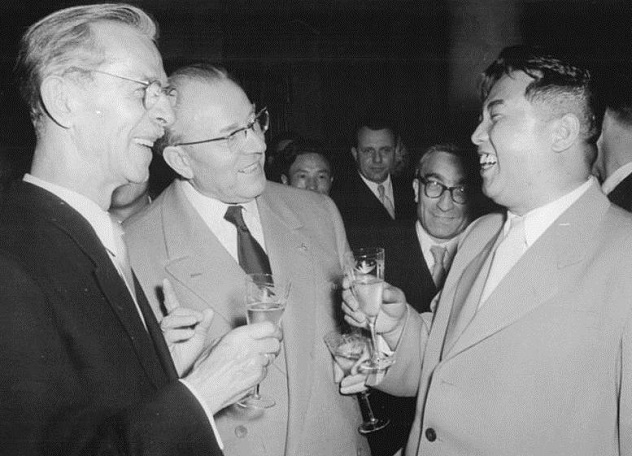
After the founder of the North Korean regime turned 65 in 1977, he assembled a group of doctors with instructions to help him to live to the age of 100, 120, or even older. According to Kim So Yeon, Kim Il Sung’s personal physician and leader of the “Longevity Center,” the group analyzed 1,750 herbs recorded in Asian medicine textbooks and conducted experiments to see how they could be used to extend the life of the dictator and his son.
One early attempted remedy was youthfulness through laughter, with the Center organizing comedy performances for the dictator and assembling young children to do miscellaneous cute things for his amusement. A more disturbing remedy was favored by Kim in his later years, in which he received blood transfusions from young people in their twenties, who were fed especially nutritious food before making the donation.
The dictator Kim only ended up living until the age of 82, which his physician blamed largely on bad habits and relying on supposed miracle cures while not actually taking care of himself. She even blamed the blood transfusions for changing his blood type from AB to B, and thus, according to Korean blood type superstition, turning him from a gregarious and lively tae-yang personality to a quiet and calculating tae-eum personality. Regardless, Dr. Kim expressed remorse for wasting her career helping to extend the life of a dictator and has since defected to the South.
5 Park Chung Hee
Youth Counterculture
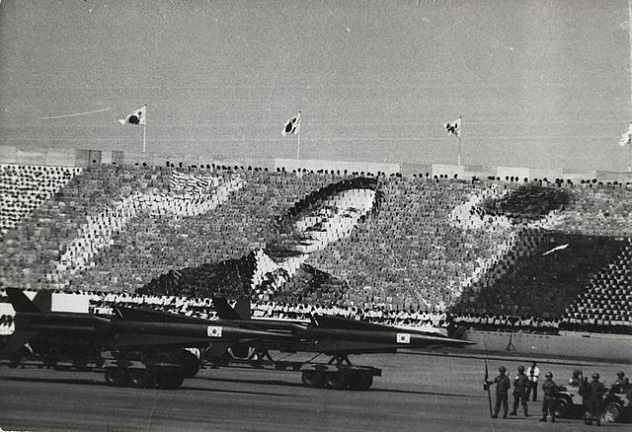
During the 1960s and 1970s, marijuana use was common and considered unremarkable in South Korea, though it has a strong taboo today. This began to change during the regime of dictator Park Chung Hee. Park opposed the influx of American counterculture, which he viewed as decadent and a threat to his rule. During a tour of the Ministry of Justice in 1976, Park put it plainly: “At this grave juncture that will settle the matter of life and death in our one-on-one confrontation with the Communist Party, the smoking of marijuana by the youth is something that will bring ruin to our country. You must pull up by the roots the problem of marijuana smoking and similar activities by applying the maximum penalties currently available under the law.”
Park wanted to establish his authority over an increasingly restive youth culture influenced by the American hippie movement and rock and roll. He targeted American-influenced music in particular. During a massive 1975 crackdown on drugs, many young musicians fell afoul of new drug laws and were arrested, with their songs blacklisted from public broadcast or heavily censored. Korean music became less edgy and more pop-oriented in the wake of the crackdown, an influence that continues to this day. One notable target was rocker Shin Joong-hyun, who had refused to write a song praising the dictator. He was tortured, committed to a mental hospital, and presented to the public as an insane drug addict.
Park Chung Hee also engaged in a campaign to root out cultural trends he deemed decadent and pushed through the Minor Offence Law, which made it illegal for women to wear a skirt shorter than a certain length or for men to have hair longer than a certain length. This led to the spectacle of police enforcing the government-approved lengths wielding rulers to harass young women on the street or subjecting hapless young men to an impromptu shave.
4 Benito Mussolini
The Catholic Church
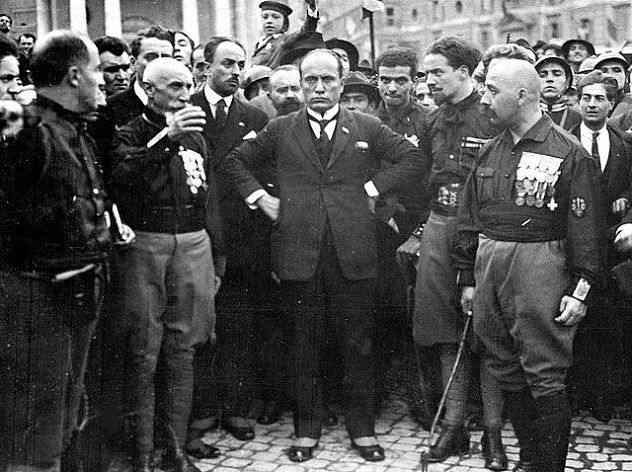
Italian fascist dictator Benito Mussolini was known in his youth as a mangiaprete (“priest-eater”) due to his strongly held antipathy toward the Catholic Church. Fascist squads at the time were known for beating up priests and terrorizing Catholic youth clubs and Catholic-owned banks. Mussolini was narcissistic with a common-law family and many mistresses.
Before he became a fascist, Mussolini had been a socialist, writing and editing for the socialist newspaper Il Popoli (“The People”) and its weekly supplement, La Vita Trentina. Among his writings for the supplement was a novel, entitled The Cardinal’s Mistress, written to denigrate the Catholic Church. The pulp story is mostly purple prose about a long-suffering cardinal and his salacious mistress, full of sex, murder, and corrupt Catholic intrigue.
Mussolini eventually reconciled with the Church in order to secure political power, reaching out to Pius XI even as fascist squads were attacking the centrist Catholic Popular Party. Mussolini made concessions to ban gambling and divorce and allow greater Church influence in schools, and the Pope agreed to order the Catholic party to disband. Mussolini wiped out Italian democracy by catering to the pope, but this merely showed his youthful hatred had evolved into a calculating and cynical contempt.
3 Adolf Hitler
Horses
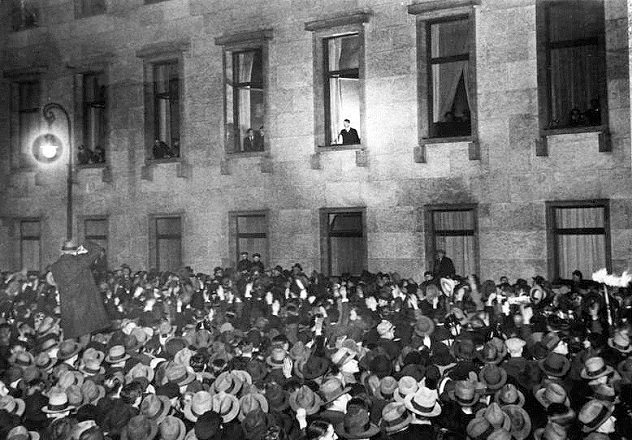
While Hitler was generally known as an animal lover, he had a strange antipathy toward horses, whom he associated with the arrogance of aristocratic cavalry officers. In his polemical Mein Kampf, he compared horses to the Jews, saying of the latter that “[their] will to self-sacrifice does not go beyond the individual’s naked interest in self-preservation [ . . . ] The same is true of horses which try to defend themselves against an assailant in a body, but scatter again as soon as the danger is past.”
According to Gustav Adolf von Halem, “Hitler did not like horses because they were not disciplined enough for him. They always disturbed the best military parades, especially when there was music. As far as I am aware, the Fuhrer never rode a horse himself. He hated them.”
He is said to have been furious that Berlin crowds watching Nazi military parades were less enthusiastic about tanks and tractor-towed artillery pieces than they were about a pair of horse regiments left over from the reign of the Prussian king Frederick II. He would attempt to abolish the horse cavalry altogether, which would seem to make sense, except that the Wehrmacht found them invaluable in the muddy wastelands of the eastern front.
2 Joseph Stalin
Flying
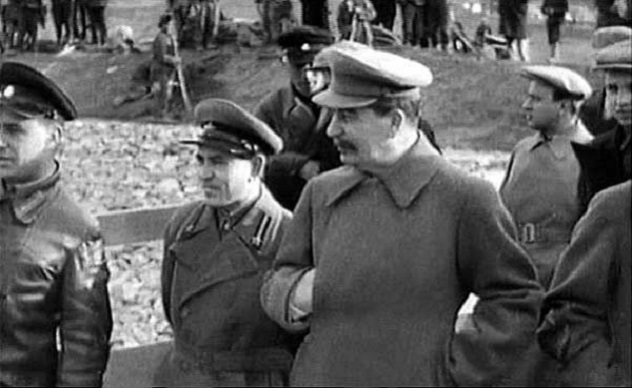
The man of steel was not such a tough guy when it came to getting on airplanes. This may have been worsened by the catastrophic 1935 crash of the Maxim Gorky, an eight-engine luxury plane with an onboard cinema and library, which flew over the Red Square in triumph until an escort biplane crashed into its right wing. For travel from Moscow to his dacha, he preferred a motorcade, while he took longer trips by train accompanied by armed soldiers.
Stalin agreed to fly only once, for the Tehran conference in 1943 with Prime Minister Churchill and President Roosevelt. He would have preferred to go overland, but no safe route existed at the time. Two Soviet-built Douglas DC-3 airliners were configured for the flight, but Stalin rejected them in favor of American-built Lend-Lease C-47 transports. Air Marshal Alexander Golovanov, commander of the 18th Air Army, was chosen as the pilot, but at the last moment, Stalin chose to take the other plane, piloted by the relatively unknown Lieutenant Colonel M. Grachev. His logic? “Better to go with Grachev. Marshals do more sitting behind a desk than behind the controls of a plane. It will be safer that way!”
The flight was successful, but Stalin was reportedly tense and terrified during turbulence. Grachev received a handshake, a promotion, and a Hero of the Soviet Union medal. Stalin, however, never flew again. Churchill was forced to fly to Moscow for a critical meeting in 1944, and an ailing Roosevelt made the long journey by sea to Yalta in the Crimea in 1945, because the Allied leaders knew they were never going to convince Stalin to fly anywhere else.
1 Ayatollah Khomeini
Pepsi
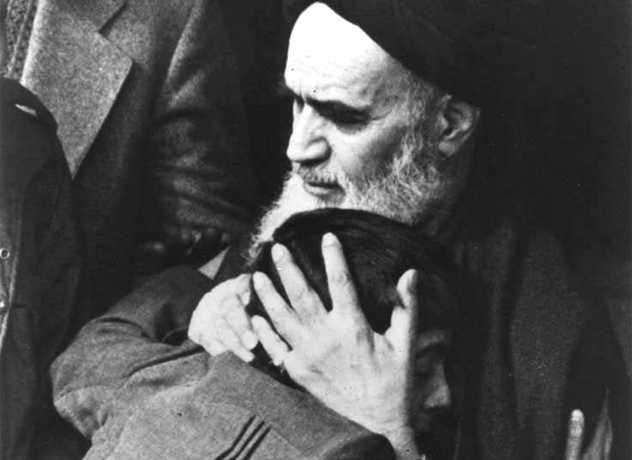
In the late 1950s, Ruhollah Khomeini was deeply involved with a group of Shia clerics who were targeting the minority Baha’i faith in Iran, which was hated because it was heretical in their eyes and because of its association with the state of Israel. Things took a turn for the weird when they realized the Pepsi contract to market in Iran had gone to Baha’i businessman Habib Sabet. In 1957, Khomeini declared that anyone who drinks Pepsi will “roast in the fires of hell.” The market for the beverage slumped immediately, allowing Coca-Cola to make inroads into the country by making sure they appointed a non-Baha’i to head the franchise there.
As anti-Western sentiment increased in the 1960s, attacks on Pepsi intensified. In 1963, the Pepsi bottling plant was ransacked and torched. The shah’s secret police may have exacerbated the antipathy for the beverage with the horrific torture method of anally raping male prisoners with Pepsi bottles. After the revolution, Khomeini would eventually lift the fatwa, as well as similar fatwas against companies like Schweppes, when control of the bottling plants was shifted to operators deemed more acceptable by the fundamentalist Shia clergy.
Pepsi got its revenge in 2012 when rumors began circulating on the Iranian Internet that Pepsi planned to use powerful lasers to shine the image of their logo on the Moon’s surface, reminiscent of a 1979 belief that Khomeini’s face would appear on the lunar surface as he returned from exile. Thousands of Iranians climbed onto their roofs to stare at the Moon. When nothing happened, some bought Coca-Cola out of spite. Among the joke images circulating on the Internet in the wake of the event was one that showed Ayatollah Khomeini superimposed on the Moon enjoyed a refreshing sip of Pepsi.
For future reference for writers of lists like this, David Tormsen hates melon. Email him at [email protected].
